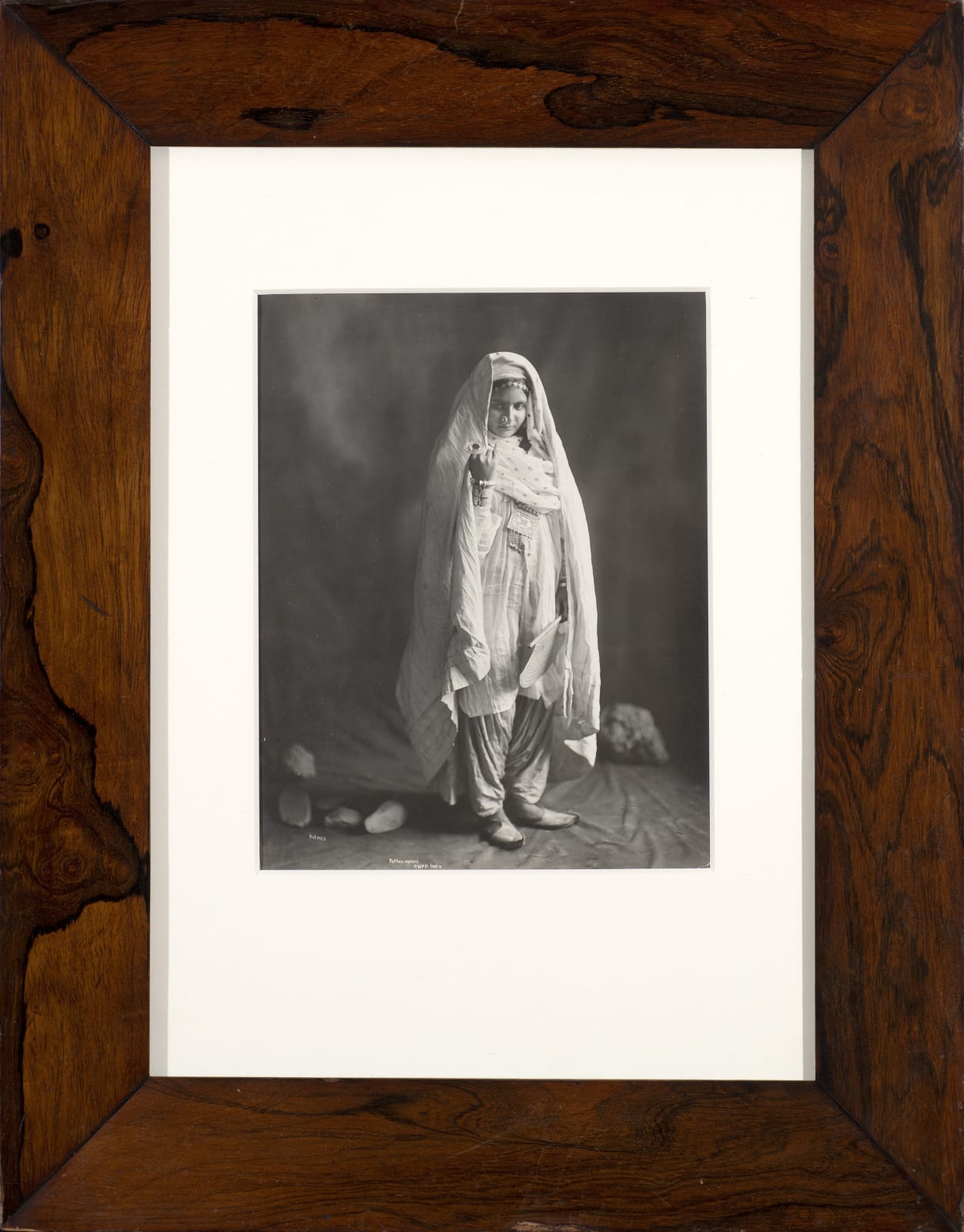Randolph Bezzant Holmes (1888 - 1973)
Pathan woman
Signed in the negative: Holmes / 124
Inscribed: Pathan Woman / NWFP India
Silver gelatin print
28.8 x 22.4 cm. (11 ½ x 8 ¾ in.)
Pathan woman
Signed in the negative: Holmes / 124
Inscribed: Pathan Woman / NWFP India
Silver gelatin print
28.8 x 22.4 cm. (11 ½ x 8 ¾ in.)
As Randolph Bezzant Holmes’ inscription in the negative tells us, the sitter is a Pathan woman and the photo was taken in Peshawar, the capital of British India’s North West Frontier Province, today in Pakistan. Pathans, also known as Pashtuns, are an Iranian ethnic group, native to the lands comprising today’s southern Afghanistan and north-western Pakistan, mountainous and generally inhospitable territories occasionally referred to as Pashtunistan. Pashtun culture is most famous for Pashtunwali, which refers to an ancient and self-governing tribal system which regulates nearly all aspects of Pashtun life. Two of the better known tenets are Melmastyā, the idea of hospitality and asylum to all guests seeking help, and Badál, swift revenge.
Taken around 1915, Holmes stands the sitter against a curtain in his Peshawar studio, placing a few rocks on the ground to mimic the mountain landscape. The lady, who looks directly at the camera, wears traditional Pashtun garments: a chador over her head, a firaq, or upper garment which flows like a skirt, reaching to just below the knees; and finally a partug, which is the lower, baggy garment.
Holmes learned the art of photography from his father William Dacia Holmes, who opened the Holmes Studio in Peshawar in 1889. Holmes took the business over in 1923, and by the time he left for New Zealand in 1947 at the moment of Partition, he had been living in the North West Frontier Province for over fifty years. His photographic images are important historical records of the people and places of Northern India and Central Asia.



